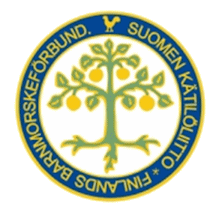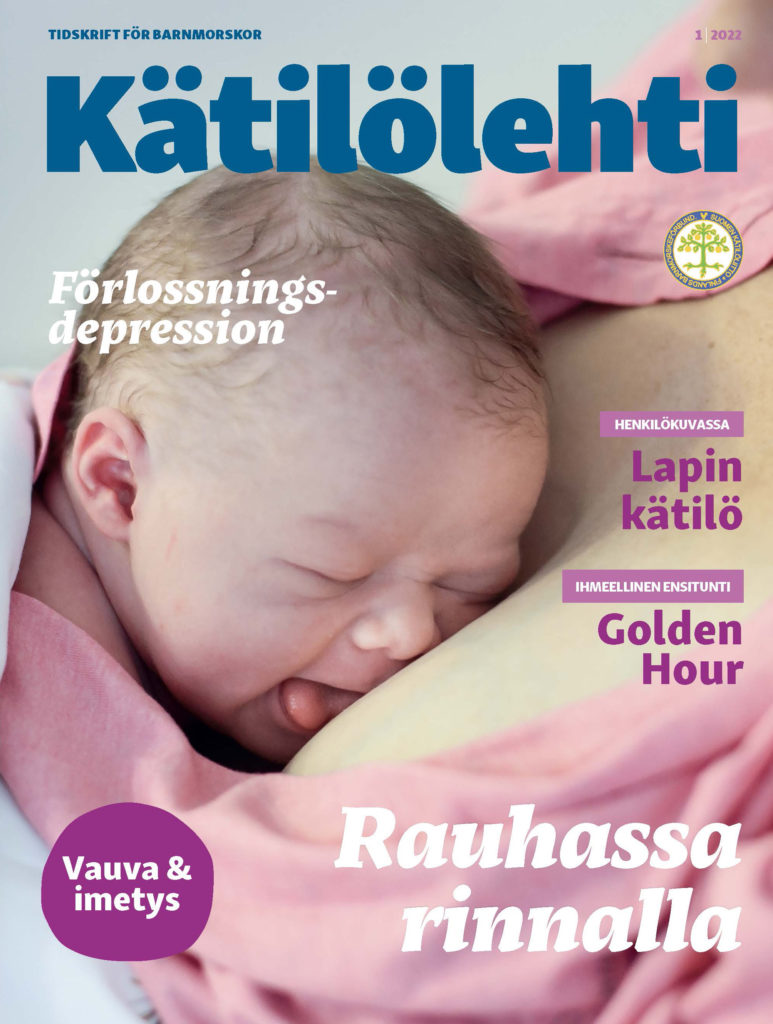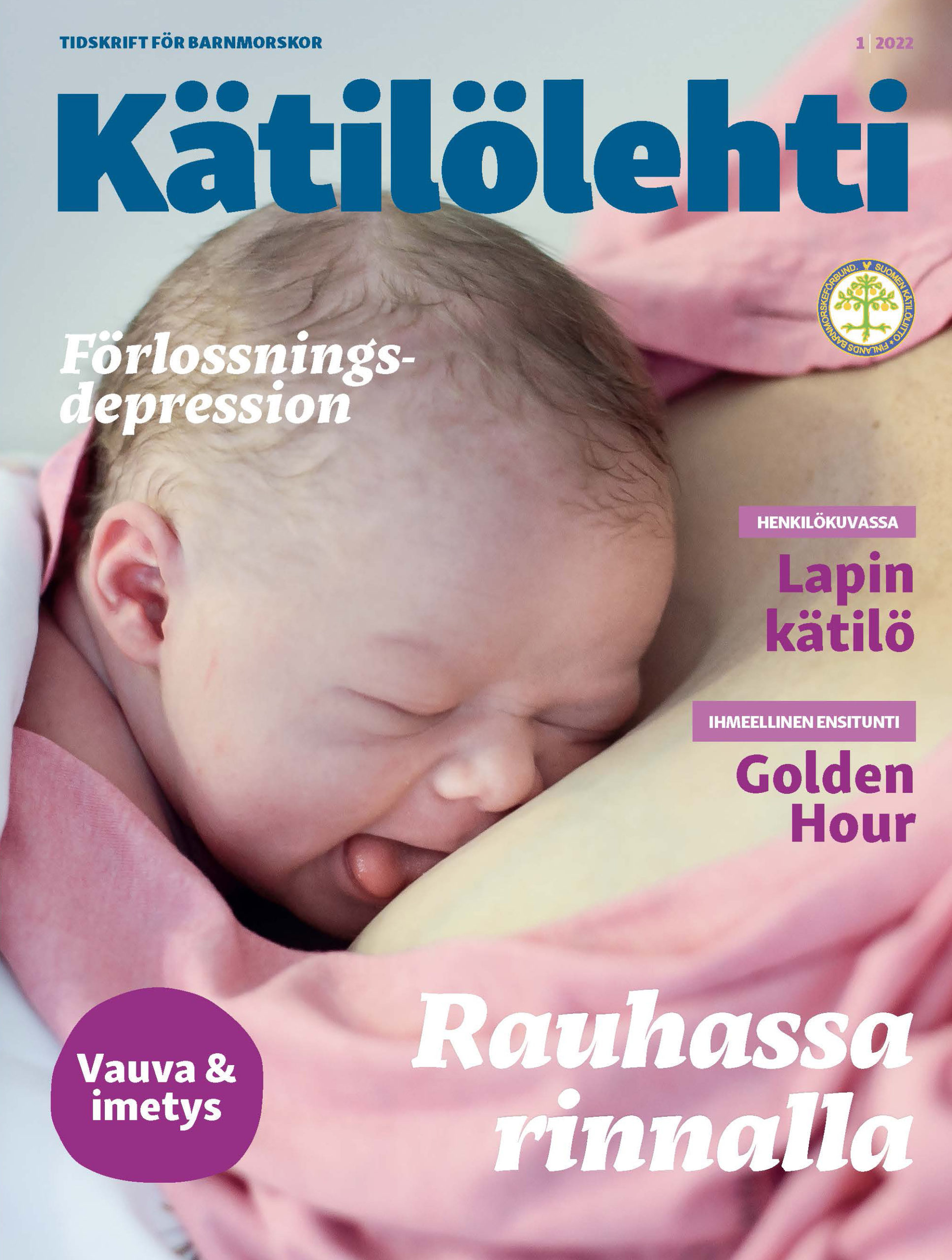Juttujen lähteet
Anu Suomalainen: Suomalainen selvittää – Golden Hour
Luentomuistiinpanot (Nils Bergman, 2008)
Natalie Charpak: Kangaroo Babies – A Different Way of Mothering, 2006
Catherine Watson Genna: Supporting Sucking Skills in Breastfeeding Infants. Third Edition.
Hannakaisa Niela-Vilen, Anna Axelin, Renee Flacking: The Golden Hour in Finnish Birthing Units – An Ethnographisc Study. Midwifery 2020;89:102793.
Ann-Marie Widström, KajsaBrimdyr, KristinSvensson, KarinCadwell, EvaNissen: A plausible pathway of imprinted behaviors: Skin-to-skin actions of the newborn immediately after birth follow the order of fetal development and intrauterine training of movements.
https://doi.org/10.1016/j.mehy.2019.109432
Outi Helasterä ja Susanna Kesäläinen: Rinnat
Bjålie, Jan G. – Haug, Egil – Sand, Olav –Sjaastad, Øystein V. – Toverud, Kari C. 2007: Ihminen. Fysiologia ja anatomia. WSOY Oppimateriaalit, Helsinki.
Buss, David M. 2006: Halun evoluutio. Ihmisen pariutumisstrategiat. Sitruuna Kustannus, Kerava.
Kitzinger, Sheila 1984: Naisen seksuaalisuus. Kustannuosakeyhtiö Tammi, Verona, Italia.
Kaarnalehto, Annika 2014: Rinnat. Kaikki mitä niistä tulee tietää. Minerva Kustannus Oy, Helsinki.
Morris, Desmond 1997: Mies ja nainen. WSOY.
Koskinen, Katja 2008: Imetysohjaus. Edita, Helsinki.
Puistola, Ulla 2004: Rintarauhasen sairaudet. Teoksessa Ylikorkala, Olavi – Kauppila Antti (toim.) 2004: Naistentaudit ja synnytykset. Kustannus Oy Duodecim, Helsinki. s. 263-268
Taipale, Pekka 2007: Rintojen terveys. Teoksessa Paananen, Ulla Kristiina – Pietiläinen, Sirkka – Raussi-Lehto, Eija – Väyrynen,
Pirjo – Äimälä, Anna-Mari (toim.)2007: Kätilötyö. Edita Prima, Helsinki. s. 592-594.
Reenkola, Elina 2012: Äidin valta ja voima – Äitimyyttiä purkamassa. Minerva Kustannus Oy.
www.feelyourboobies.com
www.kaikkisyovasta.fi
www.promama.fi
www.syopajarjestot.fi
www.vaestoliitto.fi
Lisäksi uusia tutkimuksia:
Shamseddin, M., et al. (2021) Contraceptive progestins with androgenic properties stimulate breast epithelial cell proliferation. EMBO Molecular Medicine. Ecole Polytechnique Fédérale de Lausanne. doi.org/10.15252/emmm.202114314.
Ewelina Trela, Qiang Lan, Satu-Marja Myllymäki, Clémentine Villeneuve, Riitta Lindström, Vinod Kumar, Sara A. Wickström,
Marja L. Mikkola: Cell influx and contractile actomyosin force drive mammary bud growth and invagination. Artikkeli julkaisussa Journal of Cell Biology, May 27 2021.
Amritha Varshini Hanasoge Somasundara, Matthew A. Moss, Mary J. Feigman, Semir Beyaz, John E. Wilkinson, Camila O. dos
Santos: Parity-induced changes to mammary epithelial cells control NKT cell expansion and mammary oncogenesis. Artikkeli julkaisussa Cell Reports, VOLUME 37, ISSUE 10, 110099, DECEMBER 07, 2021. DOI:https://doi.org/10.1016/j.celrep.2021.110099.
Emily Henderson: Scientists find new way to reverse aggressive breast cancer into a less dangerous kind. Artikkeli julkaisussa News Medical, Dec 7 2021. The Korea Advanced Institute of Science and Technology (KAIST).
Choi, S.R., et al.: Network Analysis Identifies Regulators of Basal-like Breast Cancer Reprogramming and Endocrine Therapy
Vulnerability. Cancer Research. doi.org/10.1158/0008-5472.CAN-21-0621.
https://rupress.org/jcb/article-abstract/220/8/e202008062/212196/Cell-influx-and-contractile-actomyosin-force-drive?redirectedFrom=fulltext
https://doi.org/10.1083/jcb.202008062
https://www2.helsinki.fi/en/news/life-science-news/cellular-mechanisms-of-early-mammary-gland-development-unraveled
https://www.sciencedaily.com/releases/2021/10/211018105920.htm
Mirjam Raudasoja: Psyykkinen turvallisuus synnytyksessä
Brodén, M. (2006). Raskausajan mahdollisuudet. Therapeia-säätiö.
Carlsson, I. M. (2016). Being in a safe and thus secure place, the core of early labour: A secondary analysis in a Swedish context. International journal of qualitative studies on health and well-being, 11, 30230. https://doi.org/10.3402/qhw.v11.30230Dikmen
Yildiz, P., Ayers, S. & Phillips, L. (2018). Longitudinal trajectories of post-traumatic stress disorder (PTSD) after birth and associated risk factors. Journal of Affecttive Disorders, 229, 377–385. doi: 10.1016/j.jad.2017.12.074.
Dixon, L., Skinner, J. & Foureur, M. (2014). The emotional journey of labour-women’s perspectives of the experience of labour moving towards birth. Midwifery, 30(3), 371–377. doi: http://dx.doi.org/10.1016/j.midw.2013.03.009.
Downe, S., Finlayson, K., Oladapo, O., Bonet, M. & Gulmezoglu, A. M. (2018). What matters to women during childbirth: A systematic qualitative review. PLoS ONE 13(4), e0194906. https://doi.org/10.1371/journal.pone.0194906
Halldorsdottir, S. & Karlsdottir, S. I. (1996). Journeying through labour and delivery: perceptions of women who have given birth. Midwifery,12, 48–61. doi: 10.1016/S0266-6138(96)90002-9.
Karlström, A., Nystedt, A. & Hildingsson, I. (2015). The meaning of a very positive birth experience: focus groups discussions with women. BMC Pregnancy & Childbirth, 15, 251. doi: 10.1186/s12884-015-0683-0..
Hodnett, E. D., Gates, S., Hofmeyr, G., & Sakala, C. (2013). Continuous support for women during childbirth. Cochrane Database of Systematic Reviews, 7. doi:10.1002/14651858.CD003766.pub5
Lundgren, I. & Berg, M. Central concepts in the midwife-woman relationship. (2007). Scandinavian Journal of Caring Sciences, 21, 220–228. doi: 10.1111/j.1471-6712.2007.00460.x..
McGrath, S. K., & Kennell, J. H. (2008). A randomized controlled trial of continuous labor support for middle-class couples: Effect on cesarean delivery rates. Birth, 35(2), 92–97.
Melender, H. L. & Lauri, S. (2001). Security associated with pregnancy and childbirth—experiences of pregnant women. Journal of Psychosomatic Obstetrics & Gynecology, 22(4), 229–239. DOI: 10.3109/01674820109049978
Namey, E. E. & Lyerly, A. D. (2010). The meaning of “control” for childbearing women in the US. Social Science & Medicine, 71, 769–776. doi: 10.1016/j.socscimed.2010.05.024..
Prinds, C., Hvidt, N. C., Mogensen, O. & Buus, N. (2014). Making existential meaning in transition to motherhood—A scoping review. Midwifery, 30, 733–741.
Raphael-Leff, J. (1991/2005). Psychological processes of childbearing. London: The Anna Freud Centre.
Rouhe, H., Salmela-Aro, K., Toivanen, R., Tokola, M., Halmesmäki, E. & Saisto, T. (2013). Obstetric outcome after intervention for severe fear of childbirth in nulliparous women – randomised trial. BJOG An International Journal of Obstetrics & Gynaecology, 120, 75–84.
Sarkkinen, M. & Savonlahti, E. (2014). Raskausajan vuorovaikutuspsykoterapia. Psykoterapia, 33(2), 93–110.
Saxbe, D. E. (2017). Birth of a New Perspective? A Call for Biopsychosocial Research on Childbirth. Current Directions in Psychological Science, 26(1) 81–86.
Stern, D. (1995). Motherhood constellation: a unified view of parent-infant psychotherapy. New York: Basic Books.
Tinkler, A. & Quinney, D. (2001). Team midwifery: the influence of the midwife-woman relationship on women’s experiences and perceptions of maternity care. Journal of Advanced Nursing, 28(1), 30–35. DOI: 10.1046/j.1365-2648.1998.00769.x
Werner-Bierwisch, T., Pinkert, C., Niessen, K., Metzing, S. & Hellmers, C. (2018). Mothers’ and fathers’ sense of security in the context of pregnancy, childbirth and the postnatal period: an integrative literature review. BMC Pregnancy & Childbirth, 18(1), 473. doi: 10.1186/s12884-018-2096-3.


